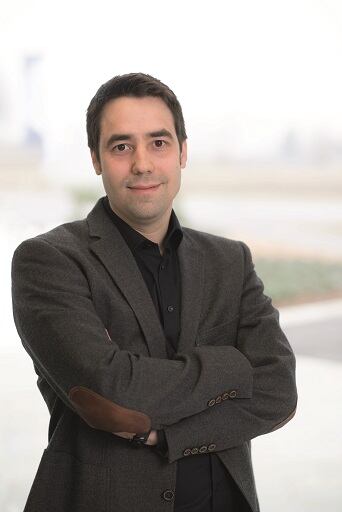Cross-reacting bacteria can cause false positive results and inhibit the growth of the pathogen searched for.
False-positive results cause extra costs for food producers, in addition to the extra time needed to confirm results.
According to ISO/FDA/USDA standards, the process of confirming test results begins with streaking selective agar plates from the presumptive positive sample. These agar plates must be incubated for two days to prove whether it is a real positive result, and incubated at a different temperature from that of routine samples.
If a lab does not have an additional incubator, the main incubator must be set aside and adjusted to the required temperature, which means downtime as the incubator cannot be used for enrichments.
Another down side of the confirmation step is that the selective agar plates cost money. They have a very limited shelf-life, it is hard to keep them in stock. Overall, false-positive tests demand unnecessary time and money.
False-positive results may occur with every pathogen detection method. It doesn’t matter if it’s a DNA, a biochemical or an immunological based technology. They are all dealing with the same issue of higher sensitivity versus higher selectivity.
A good approach is to eliminate cross reacting bacteria before detection and antibiotics are used for this purpose. But for most applications, antibiotics lack selectivity.
Overcoming the selectivity challenge
Bacteriophages (or phages) are the most abundant organisms in our environment and are present in high numbers in water, food and various other sources. Their name means “bacteria eaters”, which somewhat defines what they do.
Bacteriophages have high host specificity, attaching themselves to bacteria. The big advantage of using phages is that they are harmless to humans, animals and plants. In fact, humans are routinely exposed to phages through food or water consumption, with no negative effects.

Phages can be called “the natural enemies” of the bacteria to which they are specific to. In processed meat and meat products, there are about 108 phages per gram. High numbers of phages are also present in the human gastrointestinal tract. Before antibiotics became widely available, phages were used to treat bacterial infections.
The so-called phage therapy was developed in the USA and the former USSR. Even as antibiotics were being developed in the western world, the former Soviet bloc continued its research on phage therapy. In the post-cold war era, research activities on phages continued in Georgia where they are still carried out today.
Phages have very high specificity to their host bacteria, a characteristic that presents potentially interesting applications for food and feed, as well as the biotech industry. Today, phages are used as additives to eliminate pathogenic organisms in food, as an instrument to detect bacteria, or as in the Romer Labs SELECT media system, to reduce or even eliminate competitive bacterial flora, enabling target pathogenic bacteria species to grow to a detectable level.
They are more selective than antibiotics and microbes do not develop any resistance to them.
Identifying cross-reactivity bacteria
To identify phages which can be used in selective enrichment media or other applications to inhibit or even kill competitive bacteria, the key question is: How can I even begin to find them?
The best way to start is by looking at food or feed samples, because test materials contain bacteria which should be inhibited during enrichment. Bacteria strains that are distantly related to the pathogen searched for are not the target of the phages, but strains that are closely related to the target pathogen could cause false positive results.
After the cross-reacting background bacteria are identified, in a next step a phage that can act against it has to be identified. Phages can be found everywhere, such as in raw sewage, surface water, food and the agricultural environment.
The easiest way to extract them, if it is a sold matrix, is centrifugation. In this way, the phages will stay in the supernatant, while other components such as bacteria will form a pellet at the bottom of the container. This supernatant contains a heterogeneous mixture of different phages.
Next the different phages are isolated and it has to be determined which bacterial host they infect. This could be done by the so-called “soft agar overly technique” or by simply spotting. In this technique, a lawn of bacteria is overlaid on a traditional agar plate and the phage supernatants are spotted on the bacterial lawn.
After an overnight incubation, the phages create plaques (or zones of clearing), which are visible to the naked eye. Plaques are zones where the phages have killed the bacteria by a lytic reaction. Now, the phage clones can be isolated from the agar, which means that they are all copies of the same phage strain.
How phages help
Now it’s time to find the best phages for killing cross-reacting bacteria in pathogen enrichments. This is achieved by testing phages against the competitive bacteria as well as the target pathogen. A microtiter format is preferred to minimize costs and speed up the tests.
A visible lytic reaction in a well indicates that the phage is effective against the bacteria. After several lab trials, suitable phages can finally be identified – that is, phages that inhibit the growth of closely related bacterial strains while at the same time not affecting the growth of the target pathogen.
These phages can then be used to eliminate cross reacting bacteria in pathogen detection test systems, reducing the incidence of false positive signals in a pathogen monitoring program and thus saving a lot of money and time.
- Stefan Widmann studied Biotechnical Processes at the University of Applied Sciences in Tulln, Austria before working in the R&D division of a food safety company and developing pathogen detection systems. He is now responsible for the RapidChek pathogen detection systems at Romer Labs.
